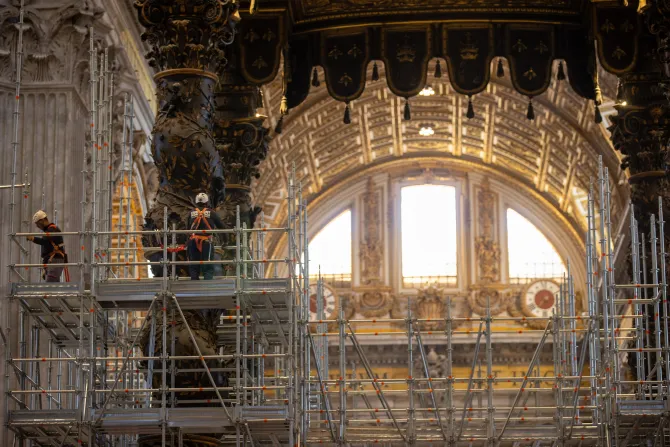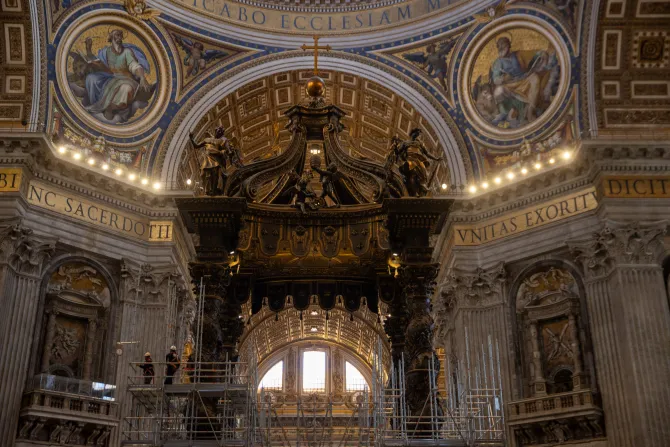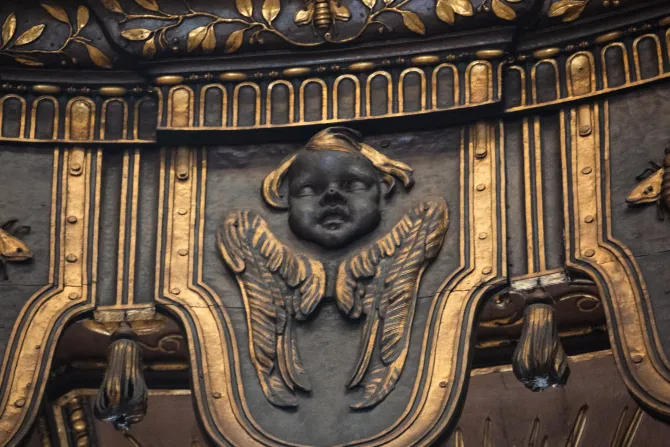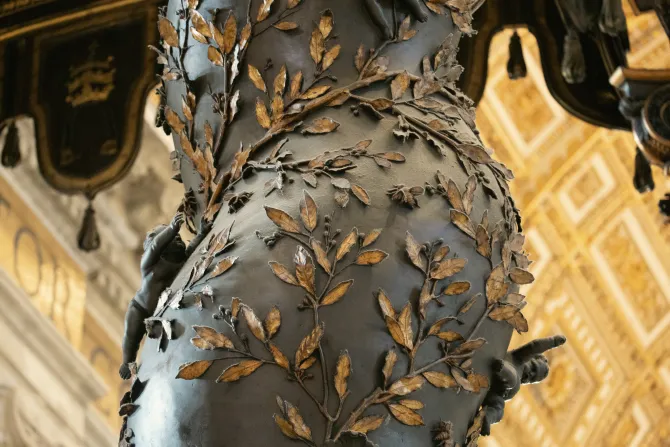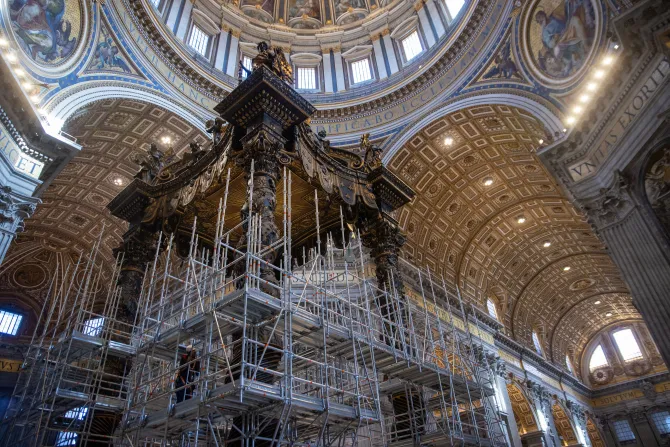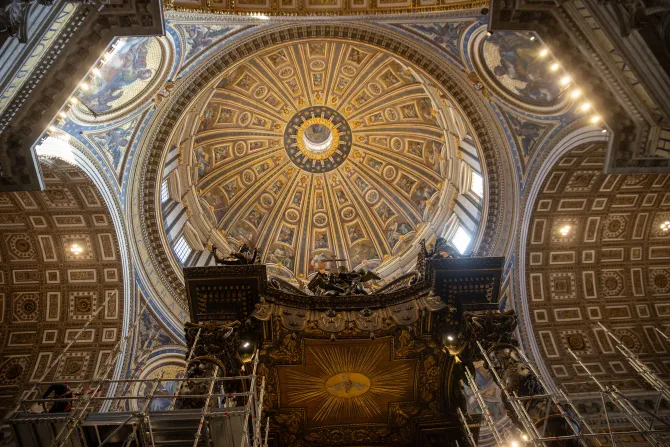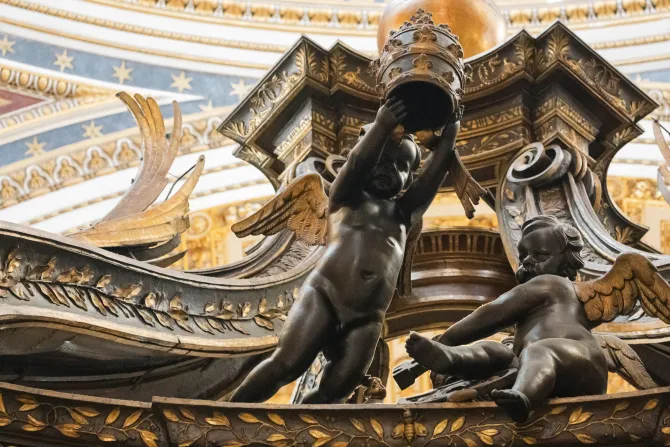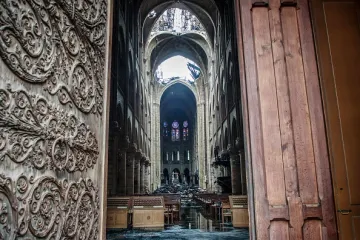Rome Newsroom, Feb 27, 2024 / 09:00 am
Restoration work has begun on the baldacchino over the main altar of St. Peter’s Basilica designed by Gian Lorenzo Bernini.
Workers will scale the scaffolding surrounding the 92-feet-high canopy each day to meticulously clean the dust and grime that has darkened the baldacchino over the centuries.
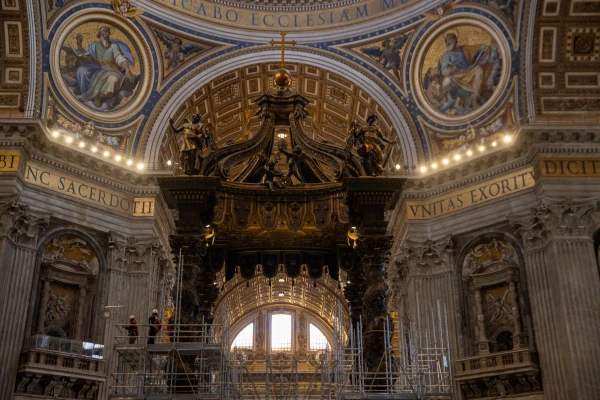
The 400-year-old twisting bronze columns of the large canopy will remain covered by scaffolding until the works are complete in December in time for the start of the Catholic Church’s jubilee year.
Cardinal Mauro Gambetti, the archpriest of St. Peter’s Basilica, has said that the scaffolding was set up in a way to allow papal liturgies — including this year’s Holy Week liturgies — to continue to take place in the basilica amid the restoration work.
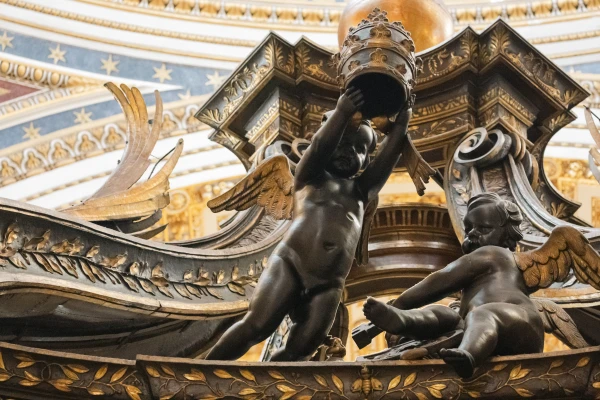
Pope Urban VIII commissioned Bernini in 1624 to design and build the enormous canopy over the Papal Altar of the Confession, located directly over the tomb of St. Peter the Apostle.
Intricately decorated with gilded Baroque angels, cherubs, bees, and laurel branches, the baldacchino took Bernini nine years to create with considerable help from his architectural rival, Francesco Borromini.
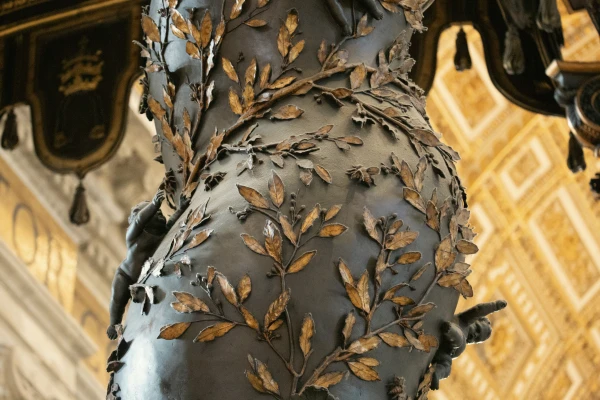
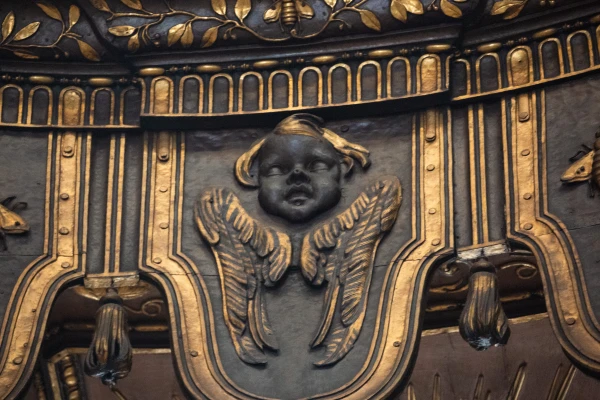
After visiting St. Peter’s Basilica in 1873, novelist Henry James described his encounter with the baldacchino: “You have only to stroll and stroll and gaze and gaze; to watch the glorious altar-canopy lift its bronze architecture, its colossal embroidered contortions, like a temple within a temple, and feel yourself, at the bottom of the abysmal shaft of the dome dwindle to a crawling dot.”
The Vatican Museums’ art restorers are leading the restoration and conservation project with a team of 10-12 experts.
Pietro Zander, the head of the artistic and archeological patrimony of St. Peter’s Basilica, explained that a preliminary investigation found that the baldacchino had a “degraded state of conservation” and that its entire surface is covered “with a dark coating.”
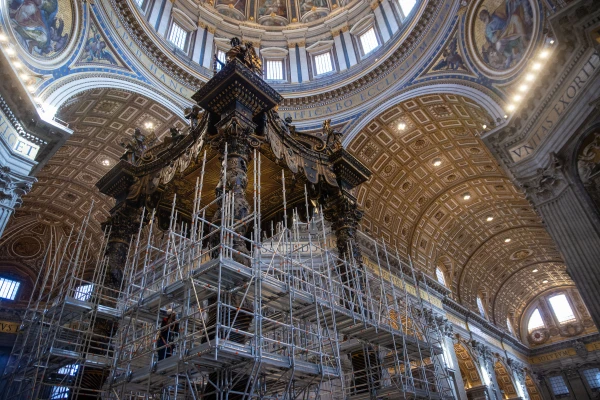
“The deterioration issues … are in part to the many visitors and pilgrims who flock to St. Peter’s Basilica every day, changing its microclimate by their presence,” Zander said.
“The basilica welcomes up to 50,000 people every day,” he said. “Considerable microclimatic variations during the day and strong changes in temperature and humidity between day and night interact with the canopy, causing alterations and corrosion of the metal; oxidation of the iron supports and reinforcements; and expansion of the wooden parts with consequent lifting and detachment of layers on its surface.”
(Story continues below)
Zander indicated that further study of the “microclimate of the basilica” will also help to form a conservation plan for all of the artistic works in the basilica.
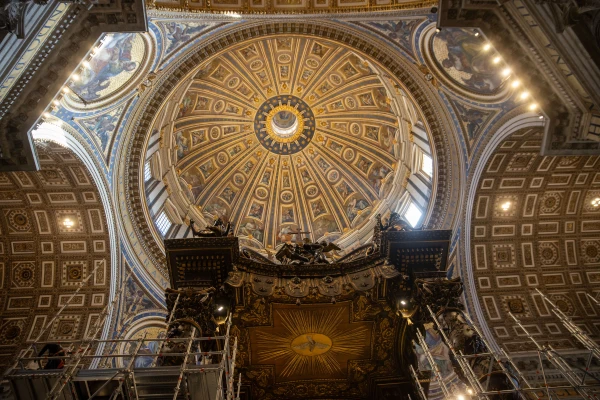
The Knights of Columbus are funding the baldacchino restoration, which costs 700,000 euro (about $768,000).
Patrick Kelly, the head of the Knights of Columbus, described Bernini’s baldacchino as “a singular masterpiece of sacred art,” which “fits very well with our mission and with our history of service to the Church, and especially the successors of St. Peter.”


